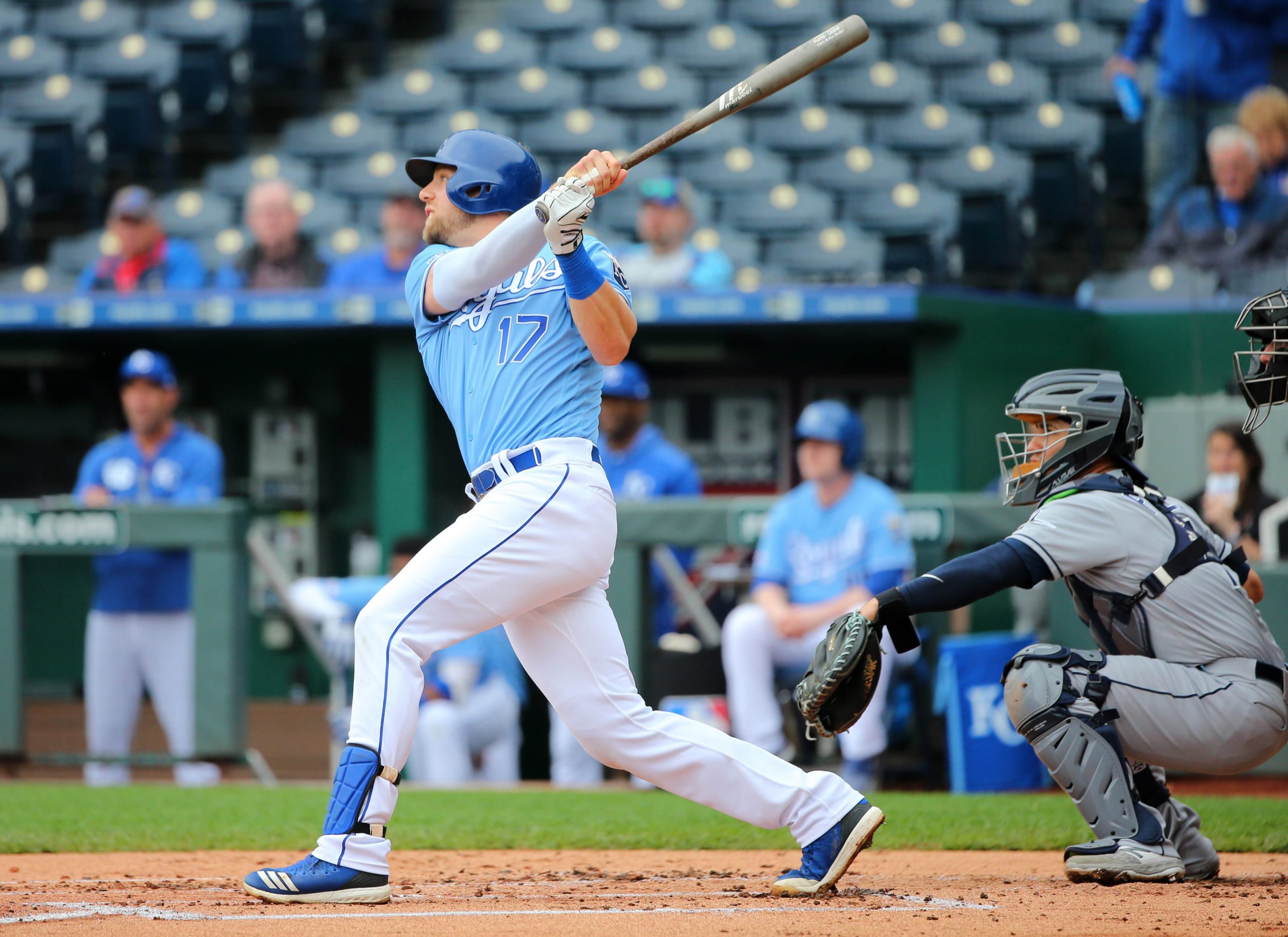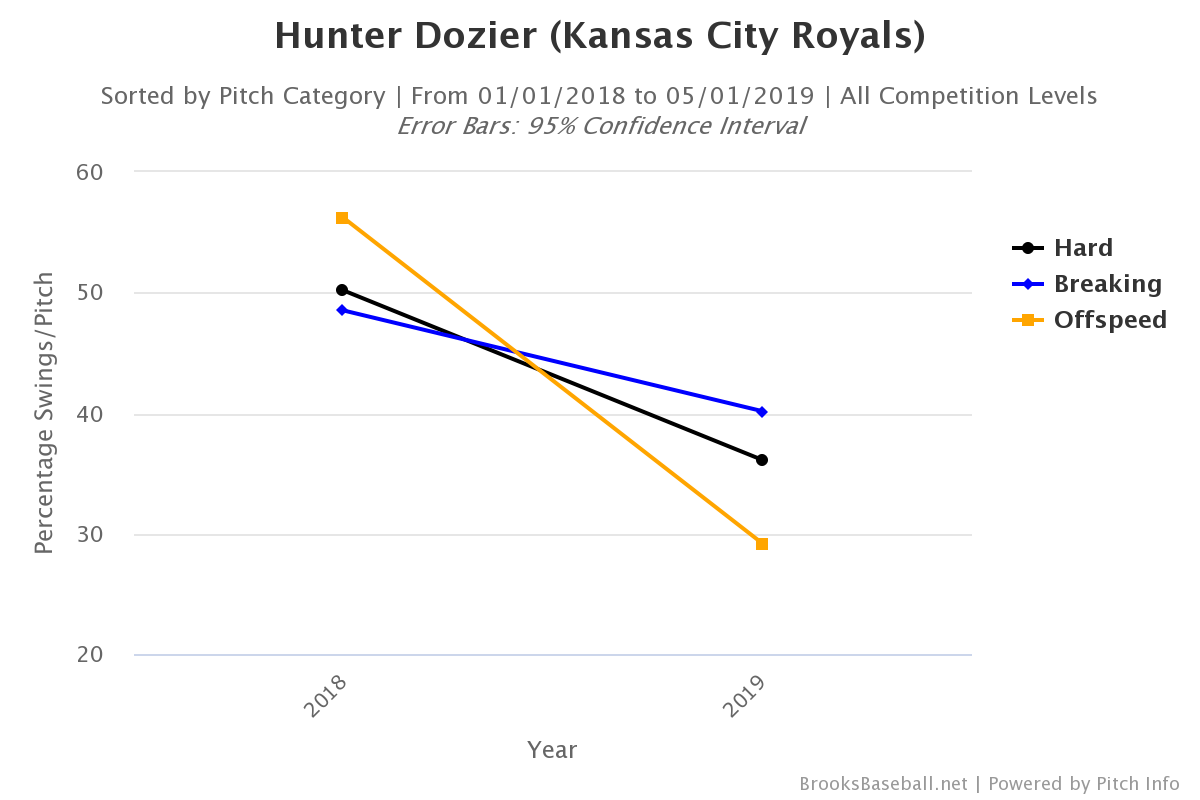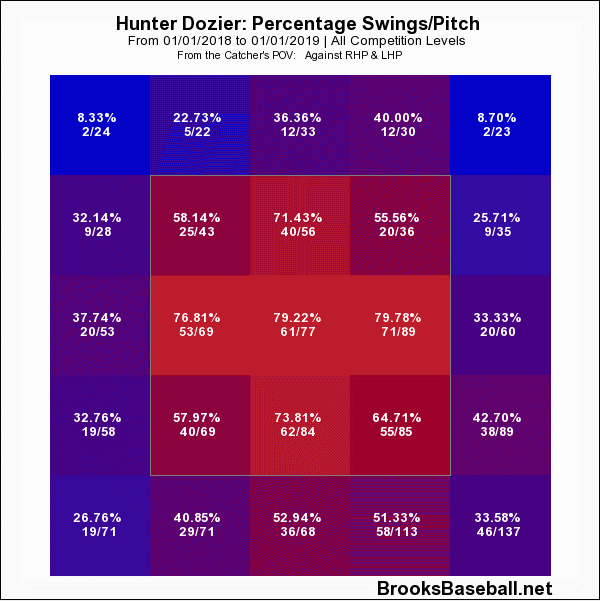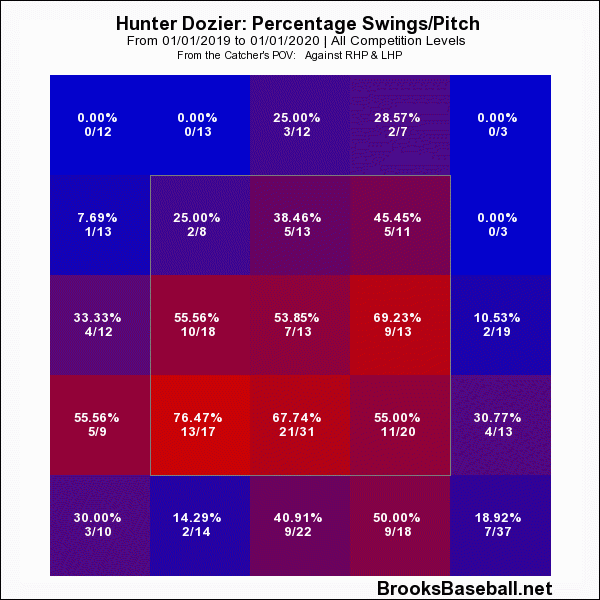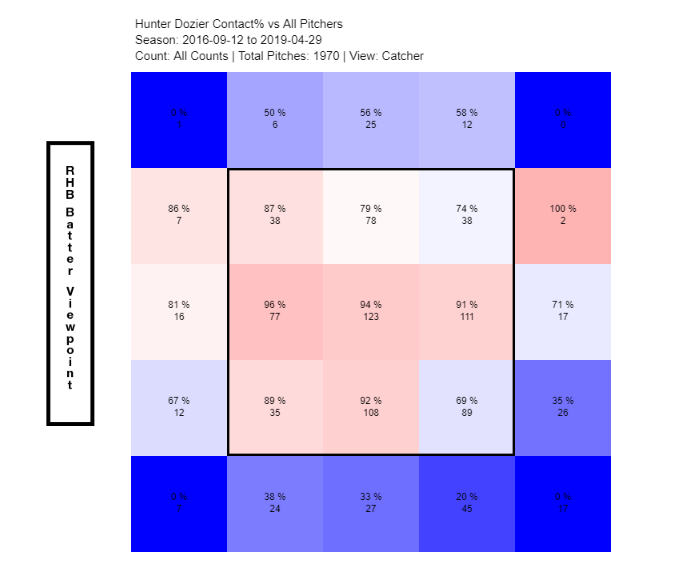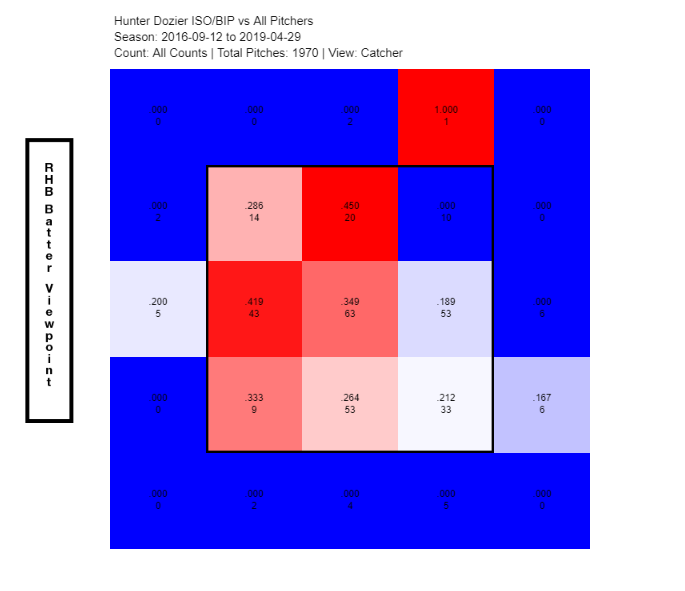No baseball fan can avoid hearing about the incredibly strong starts from Cody Bellinger and Christian Yelich. It’s well deserved, as both players are getting off to starts that could propel them to MVP-like seasons. In the American League, there’s another slugger not far behind. The difference is, you likely didn’t know anything about him until now. This first baseman in 3rd in the MLB in wRC+ at 195. He’s also 3rd in DRC+ (which attempts to adjust for luck more) at 165. He’s also 3rd in OPS at 1.133. His name is Hunter Dozier, and since you maybe didn’t know, he plays for the Royals.
Dozier is a third-baseman and former #8 overall selection in the 2013 draft. Some writers were critical of the Royals for selecting Dozier that early, calling it a reach. After performing poorly and spending over 2 seasons in AA, that criticism looked vindicated. By the point he reached AAA, Dozier was no longer a well-regarded prospect, rather he was more of a mid-tier hitter. In 2018, Fangraphs gave him a 40-grade hit tool, which would have to be improved upon for a right-handed corner infielder to ever earn playing time at the highest level.
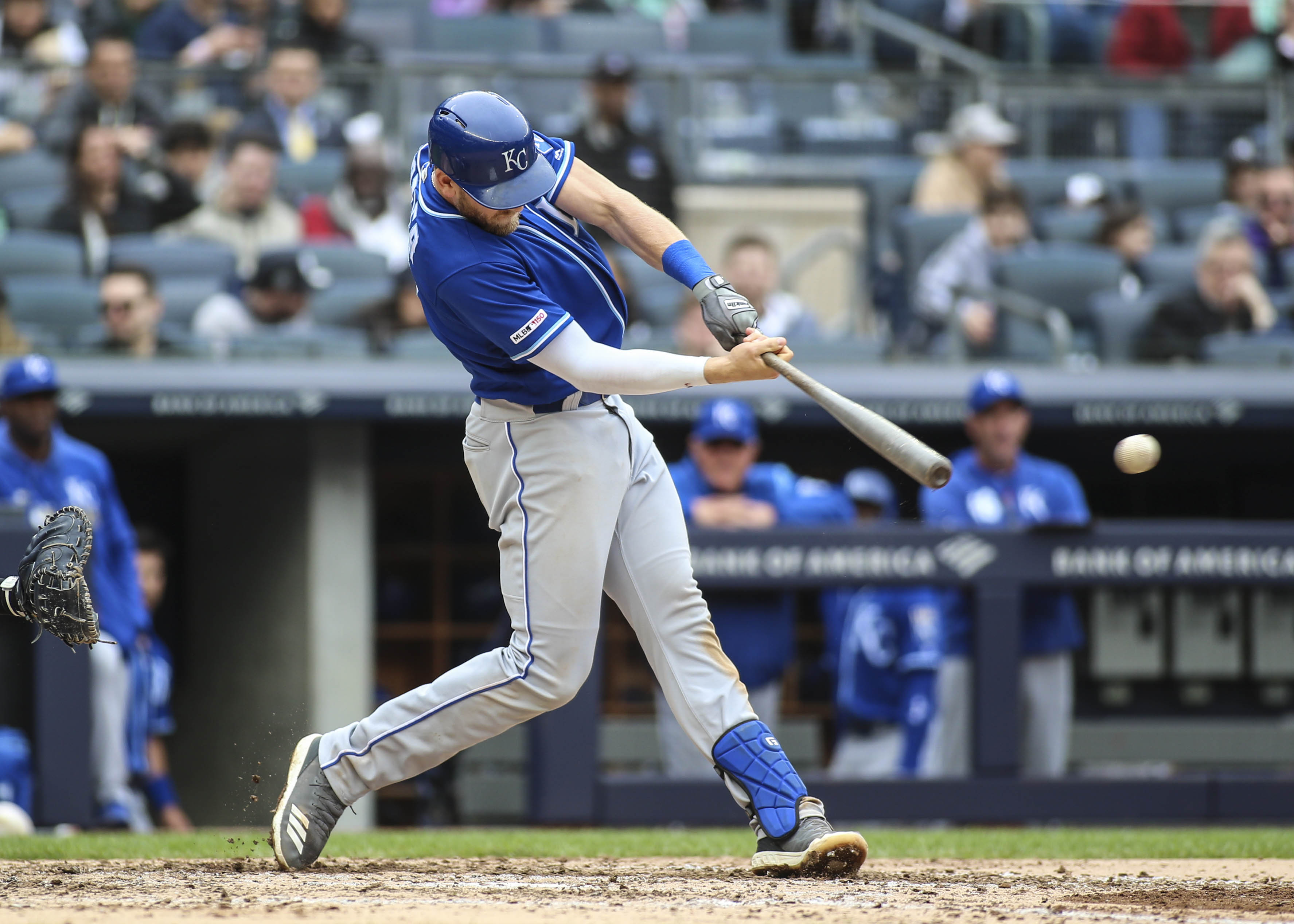
His strikeout rate was over 23% in just about every minor-league season and over 30% against more advanced pitching. The presence of Ryan O’Hearn and the Nick Pratto draft pick started to put some pressure on him. He didn’t crack a role in the big leagues until 2018 when he was already 26 years old.
Even once he got to the big leagues, Dozier’s career appeared as if it would be short-lived. Going into this surprising 2019 season, Dozier had racked up 110 career games with a -0.8 fWAR. His 78 wRC+ over the 2017 and 2018 seasons. Only 6 other batters that played corner positions or DH performed worse over the same time frame. Dozier had struck out in 22% more plate appearances than he walked, a very high difference. Nonetheless, he was given a chance to start the 2019 season with the essentially-tanking Royals.
That chance is paying dividends for Kansas City. Even though he won’t be enough to push them into contention, his hot start could catapult his career into another direction, and subsequently the Royals’ future. His 195 wRC+, .447 OBP, and .337 ISO won’t continue on for even another month in all likelihood. Even after April, Steamer projects the rest of Dozier’s season to only result in 0.8 fWAR. The question remains if Dozier’s adjustments for the 2019 season will lead to a future in the big leagues.
The most obvious change with Dozier is his plate discipline. It had been a huge problem over the rest of his career, with it resulting in low walk rates and high strikeout rates. In 2019, the changes have been drastic, as Dozier has posted rates that have reflected Carlos Santana rather than Joey Gallo. Through April, Dozier has walked 14.6% of the time, while striking out only 17.5% of the time. That’s resulted in the 2nd largest increase in walk rate and 4th largest drop in strikeout rate from 2018 to 2019.
This change in results has likely come from a change in aggressiveness. Dozier has gone from swinging at 50.1% of pitches in 2018 to only 37.1% in 2019. The next biggest drop from those 2 seasons is from Niko Goodrum at 8.7%, not even close to Dozier. In fact, this drop is so significant that it represents only the 2nd time in the past decade in which any batter swung at over 10% pitches less from one season to the next (Jonny Gomes from 2010 to 2011). He’s cut down on swinging at balls both out of the zone and in the zone, to be more specific.
It’s the upper and outer pitches that Dozier has been much more patient with. That’s positively affected his game in other ways than just walking more often. It has allowed him to make contact with more balls in the zone. His Z-Contact% has gone up, likely due to swinging at less outside or high strikes. His selectiveness has not just helped him hit more balls in play, but he’s hit more balls hard for extra-base hits.
Over his career, Dozier has produced more power on middle-in pitches. The lack of opposite field fly balls has likely helped Dozier stay productive so far this season. When he was much more aggressive, Dozier hit more than half of his fly balls to right field. In 2019, that’s dropped all the way down to 35%, with much more going to center field. 6% of fly balls hit to right field have left the yard for Dozier. Any other fly ball has left the yard 21.5% of the time.
Tapping into his raw power has led to this early breakout. Of course, even though Dozier has arguably been the best hitter in the American League thus far, it remains unlikely that he finishes the season still in MVP contention. And as a 27-year old, it seems unlikely that he continues to improve from season to season. However, with notable changes in approach, Dozier was able to revive his career and create a future role for himself on the Royals.
Add The Sports Daily to your Google News Feed!
